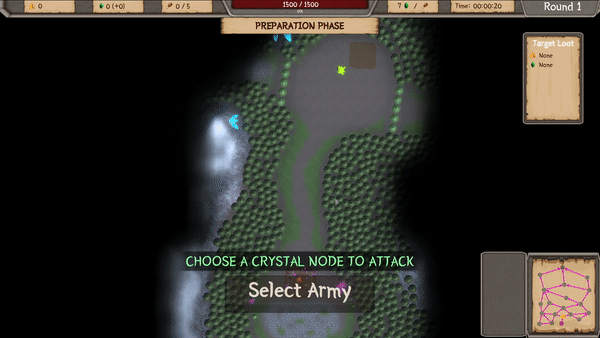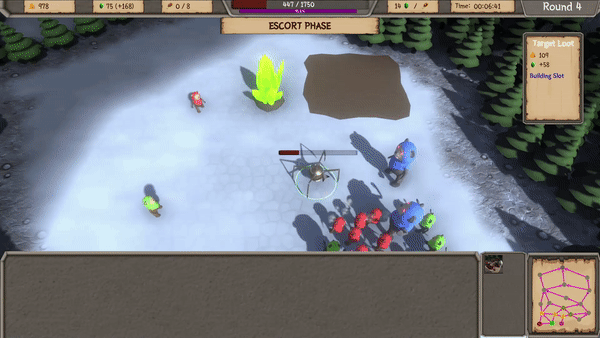
9/2019 - 11/2019
Crystal Frenzy

Engine/Software
Languages
Roles
Notable Features Worked On
: Unity3D
: C#
: Programmer, Designer, Sound Designer
: Camera, RTS Controls, AI, Bezier Movement, Upgrades System, Units Design, Level Design, FMOD
About
Crystal Frenzy is a RTS rogue-lite game where you play as the evil goblins who are attempting to harvest the natural resources of the peaceful forest natives. You fight to control crystal nodes with different randomised rewards in turn-based rounds to reach the end of the map, and along the way, build up your army to conquer the forest.
Crystal Frenzy was developed in a 2 man team as part of a school project and was the first game we developed with Unity. I handled all the Unity development as well as the sound design, and my partner, Darryl Reekers, created most of the 3D models, art and animations. Crystal Frenzy was a very ambitious project given the amount of time (about 1 month) and experience we had.




Original Design
Crystal Frenzy was originally designed as a multiplayer RTS similar to the Warcraft 3 custom map, Footman Frenzy, hence the name of the game. Players would either control an industrial orcish/goblin faction and a one-with-nature faction of elves and trees. The nodes would be set locations around the map, and each faction would be able to send out 1 miner at a time that will slowly travel along a predestined path towards the node. The faction would then have to defend their miner until it reaches the node. These units are spawned by building spawners that periodically and automatically spawn a unit, similar to Footman Frenzy. Each node would provide resources, and based on how many were controlled by each faction, the world around would change to become more industrialised and dead or more lush, along with benefits to that faction. Once all the nodes were captured, you would be able to assault the opposing faction's fortress, but they would also gain a significant defensive boost that would be hard to break through.
I attempted to prototype a networked implementation using the Forge Networking library, create the various RTS controls and spawning of units around the buildings, and create a bezier implementation to draw the path that the miner would move through. Units moved around through Unity's navmesh. I soon realised that creating a multiplayer game would be too complicated, especially since I had no prior experience with it, and it did not work well with Unity's navmesh. Thereafter, we reduced the scope of the game to what it is now, a singleplayer RTS rogue-lite.
Map Layout

The above image is the entire view of the map. Trees are used to create the various linear paths that units can take between nodes. The paths were designed to be shorter and more straightforward at the start (bottom center), and slowly get longer and more long winded as the player progressed through the map to the last node (top center). I also tried to provide branching paths, some of which would result in a longer path with more potential rewards, but also allow the enemies to get stronger, providing some choice making and dilemma in the player's decision making.


